Your Guide to Growing Incredible, Fragrant Jasmine (The Right Way)
I’ll never forget the first time I really got jasmine. I was working on a historic property where an old vine had completely taken over a brick wall. On a warm summer evening, the air was so thick with that sweet scent you could practically taste it. It taught me something important: jasmine isn’t just a plant you grow. It’s an atmosphere you create.
In this article
- First, Let’s Talk Jasmine: The Real vs. The Impostors
- The Foundation: Site Prep and a Quick Shopping List
- Planting Your Jasmine for Long-Term Success
- Training: Telling Your Vine Where to Go
- The Art of Pruning (It’s Not Scary, I Promise)
- Caring for Your Jasmine: Water, Food, and Pots
- Troubleshooting: Why Isn’t My Jasmine Happy?
- Inspirational Gallery
A lot of guides make it sound almost too easy. But if you want a plant that will thrive for decades, you have to understand what it wants. It’s not about secret tricks; it’s about solid, foundational knowledge that the pros use every day. Let’s walk through it, from picking the right plant to making that final, perfect cut.
First, Let’s Talk Jasmine: The Real vs. The Impostors
Before you even think about grabbing a shovel, you need to know about a critical distinction. A lot of plants get called “jasmine,” but they aren’t even related. This is, hands down, the most common mistake I see, and it can lead to some real disappointment (or worse).
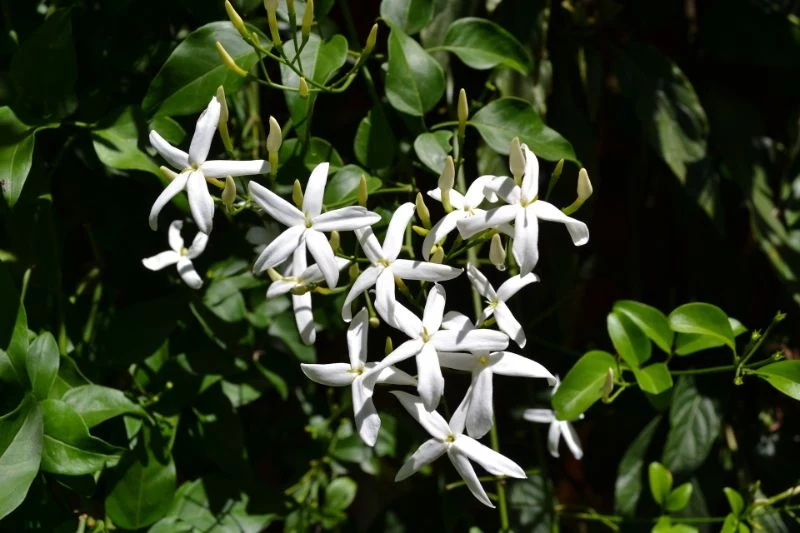
Always, always check the botanical name on the plant tag. If you’re after that classic fragrance and vining habit, you’re looking for a plant in the Jasminum genus.
True Jasmines (The Jasminum Genus)
These are the genuine article, part of the olive family, and known for that intoxicating scent. They can be vines or shrubs, and some lose their leaves in winter while others stay green.
- Common Jasmine (J. officinale): This is the classic white-flowered vine you’re probably picturing. It’s a strong grower, potentially reaching 30 feet, and fills the summer air with fragrance. It’s a great choice for zones 7-10. It does lose its leaves in colder areas, so don’t be alarmed in the fall!
- Winter Jasmine (J. nudiflorum): This one’s a tough, scrambling shrub that’s incredibly hardy (zones 6-9). It’s a bit of an oddball—it produces cheerful yellow flowers on bare stems in the dead of winter. Heads up: the flowers aren’t scented. It needs to be tied to a support if you want it to climb.
- Arabian Jasmine (J. sambac): This is the one used for jasmine tea. It’s more of a shrub than a vine and has intensely fragrant white flowers all summer. It’s tropical, so it’s only hardy in zones 9-11. It’s absolutely fantastic for growing in pots that you can bring indoors for the winter.
“False” Jasmines (Looks Can Be Deceiving)
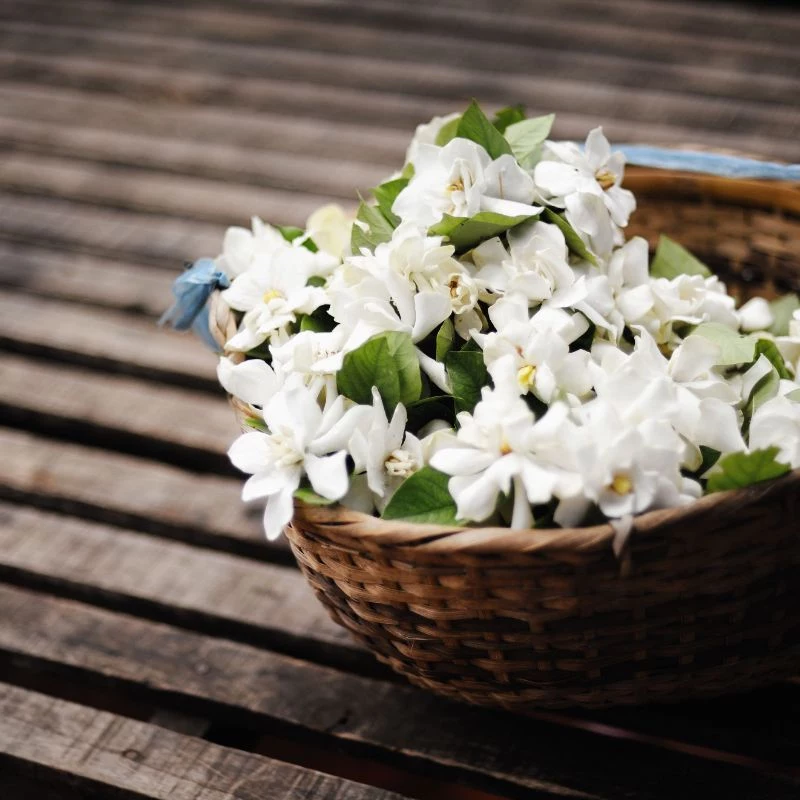
These plants borrow the name but have different needs. They can be gorgeous, but you need to know what you’re getting.
- Star Jasmine (Trachelospermum jasminoides): This is the most common “impostor” and, honestly, a fantastic plant in its own right. It’s an evergreen vine with glossy leaves and super fragrant, star-shaped white flowers. It’s hardy in zones 8-10 and twines aggressively around whatever it can grab.
- Carolina Jessamine (Gelsemium sempervirens): Okay, pay attention to this one. It’s a beautiful native vine with bright yellow, trumpet-shaped flowers in spring. But… all parts of this plant are highly toxic if eaten. I once consulted on a property where a family planted it right next to their vegetable garden, thinking it was true jasmine. It’s a serious safety issue, especially if you have curious kids or pets.
So, what’s the best for a beginner? To be frank, Star Jasmine is probably the most forgiving and lush-looking option if you’re in the right zone (8-10). But if you have your heart set on that true jasmine scent, I’d start with Common Jasmine (J. officinale). It’s a classic for a reason.
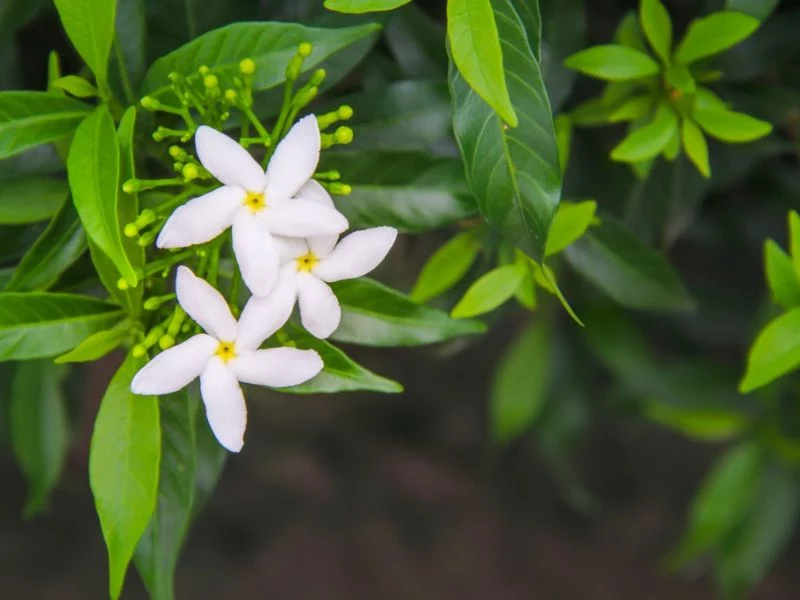
The Foundation: Site Prep and a Quick Shopping List
A jasmine plant can live for over 50 years, so spending a few hours preparing its home is a great investment. Plan for a full afternoon for the digging and planting. You can’t fix a bad location later without starting over.
Jasmine’s number one demand is well-drained soil. If water sits around its roots, they will rot, and the plant will slowly die. You can test this by digging a 1-foot-deep hole, filling it with water, and seeing how fast it drains. Ideally, it should drop about 1-2 inches per hour. If it’s way faster (sandy soil) or slower (clay soil), you’ll need to amend it.
For both heavy clay and fast-draining sand, the answer is the same: organic matter. Mix in a good 3-4 inch layer of aged compost or well-rotted manure into an area about 3 feet wide and 1.5 feet deep. This helps clay separate and helps sand hold onto moisture.
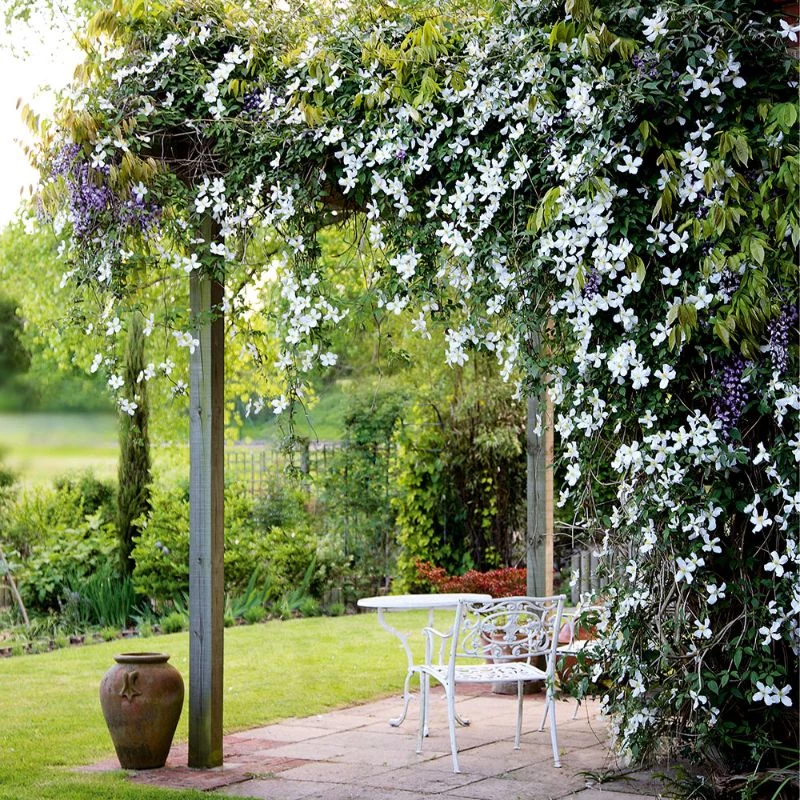
Your Basic Shopping List:
- Jasmine Plant: Expect to pay between $25 and $50 for a healthy, 2-gallon plant at a local nursery.
- Compost or Soil Conditioner: A big bag will run you about $8-$12.
- Trellis/Support: This is where the price varies wildly. A simple 6-foot fan trellis you stake in the ground might be $30. A larger, more decorative wooden lattice panel from a store like Home Depot could be $50-$100. A custom wire-and-eyebolt system for a brick wall will cost more in materials and time.
- Mulch: Around $5 for a bag of pine bark or cypress mulch.
Choosing the Perfect Spot
Most jasmines need at least 6 hours of direct sun to flower their hearts out. In scorching hot climates, a little afternoon shade is a blessing. An east-facing wall is often the sweet spot—it gets gentle morning sun and is protected from the harshest afternoon rays.
Think about the plant’s final size! Give it a strong support from day one. For a brick or stucco wall, a system of wires held by eyebolts is a pro go-to. For a wooden fence, a simple lattice or trellis works great. And please, think about spacing. If you want to cover a long fence, plant the vines about 4-5 feet apart to give each one room to branch out before they meet.
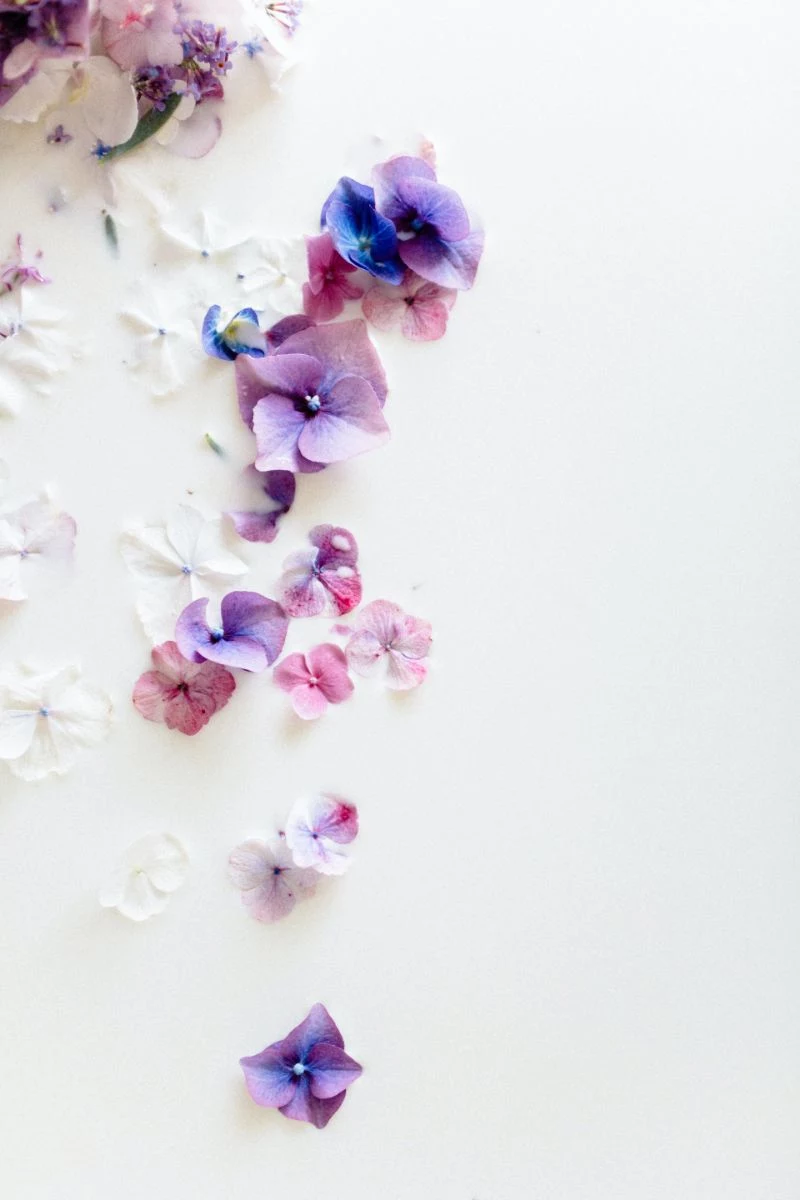
Oh, and by the way: Not sure what your hardiness zone is? Just pop your zip code into the USDA Plant Hardiness Zone Map online. It takes two seconds!
Planting Your Jasmine for Long-Term Success
The best time to plant is spring or early fall, which gives the roots time to get established before the stress of extreme heat or cold. Here’s the method we use on professional jobs:
- Dig a wide hole. Make it twice as wide as the pot, but—and this is critical—no deeper.
- Hydrate the plant. Water the jasmine in its pot an hour before planting to reduce shock.
- Check the roots. Gently slide the plant out. Are the roots a tangled, circling mess? That’s called being root-bound. Gently tease the bottom roots apart and make a few shallow vertical cuts on the sides of the root ball. This tells the roots to grow outwards, not to keep strangling themselves.
- Get the height right. Place the plant in the hole so the top of its root ball is level with or even slightly higher than the surrounding soil. Planting too deep is the #1 rookie mistake! The part of the stem that grew above ground isn’t designed to be buried; it will rot from the constant moisture and kill your plant before it even gets started.
- Backfill and settle. Fill the hole halfway with your amended soil, then fill it with water to remove air pockets. After it drains, fill the rest of the hole.
- Build a water basin. Use leftover soil to create a small circular ridge around the plant to direct water right to the roots.
- Water deeply and then add a 2-3 inch layer of mulch, but be sure to keep it a few inches away from the main stem to prevent rot.
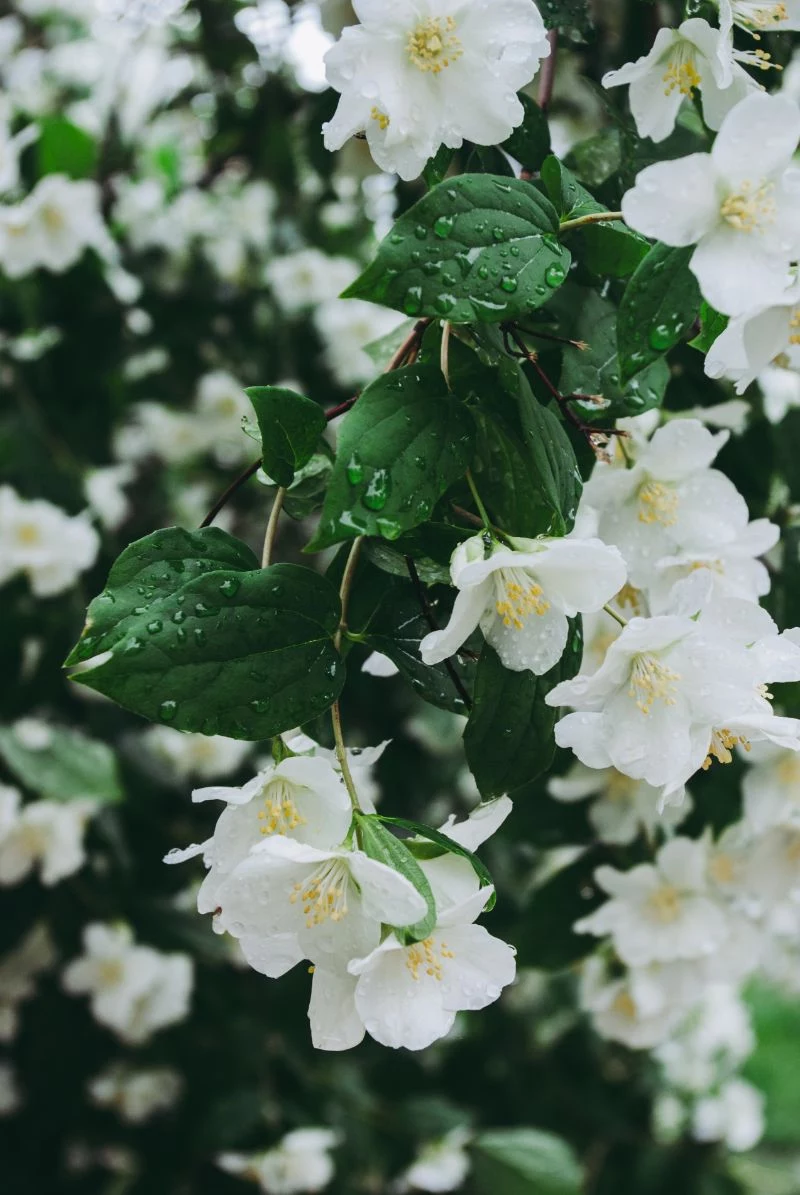
Training: Telling Your Vine Where to Go
A vining jasmine without guidance will turn into a tangled knot. Your job is to provide a structure and lead the way. The first two years are key for creating a strong framework.
As soon as the stems are long enough, start tying them to your support. Don’t use wire or zip ties that will cut into the stems! Use soft plant ties or jute twine, tied in a figure-eight loop to give the stem room to grow. Aim for a fan shape with 3 to 5 main stems, then weave the new growth through the trellis. This helps the plant support itself over time.
The Art of Pruning (It’s Not Scary, I Promise)
Proper pruning means more flowers and a healthier plant. The most important rule is timing, and it all depends on when your jasmine blooms.
- For summer-flowering types (like Common or Arabian Jasmine), prune them in late winter or very early spring before new growth starts. They bloom on the new wood they’re about to grow.
- For winter-flowering types (like Winter Jasmine), you have to wait. Prune them in the spring, right after they finish flowering. They bloom on last year’s growth, so if you prune in winter, you’ll cut off all the buds.
When you have your pruners in hand, think about three things: Clean, Thin, and Shape. First, cut out any dead, damaged, or diseased wood. Second, thin out about a third of the oldest, thickest stems at the base to open the plant up. Finally, step back and shape it up, trimming stems that are going rogue.
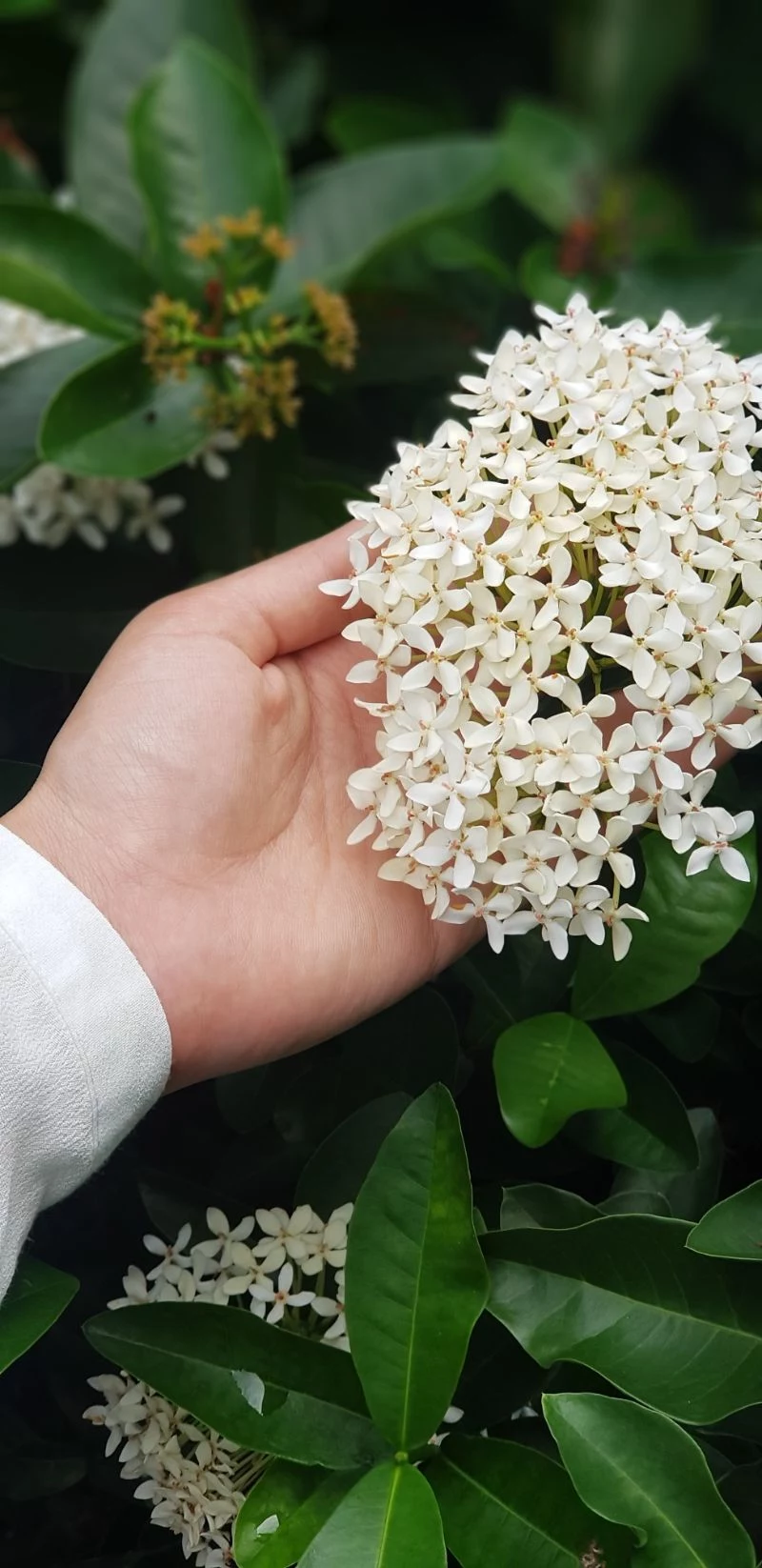
A quick tip on tools: Use sharp, clean bypass pruners. And clean them between plants! I learned that the hard way once and had to tell a client I’d spread a fungus through their prize hedge because I got lazy. It was an expensive mistake I’ve never made again. A quick wipe with rubbing alcohol is all it takes.
Caring for Your Jasmine: Water, Food, and Pots
Once established, your jasmine is pretty low-maintenance. Water deeply but not too often—stick your finger two inches into the soil, and if it’s dry, it’s time to water.
Go easy on the fertilizer. Too much nitrogen gives you lots of green leaves but no flowers. A fertilizer with a higher middle number (Phosphorus), like a 5-10-5 formula, is perfect for promoting blooms. Feed it once in the spring.
A special note on container gardening: Yes, you can absolutely grow jasmine in a pot! Choose a large one—at least 18-24 inches in diameter—to give the roots room. Potted plants dry out much faster, so you’ll need to check the soil every day or two in the summer. For non-hardy types like Arabian Jasmine, simply bring the pot into a sunny window or garage before the first frost.
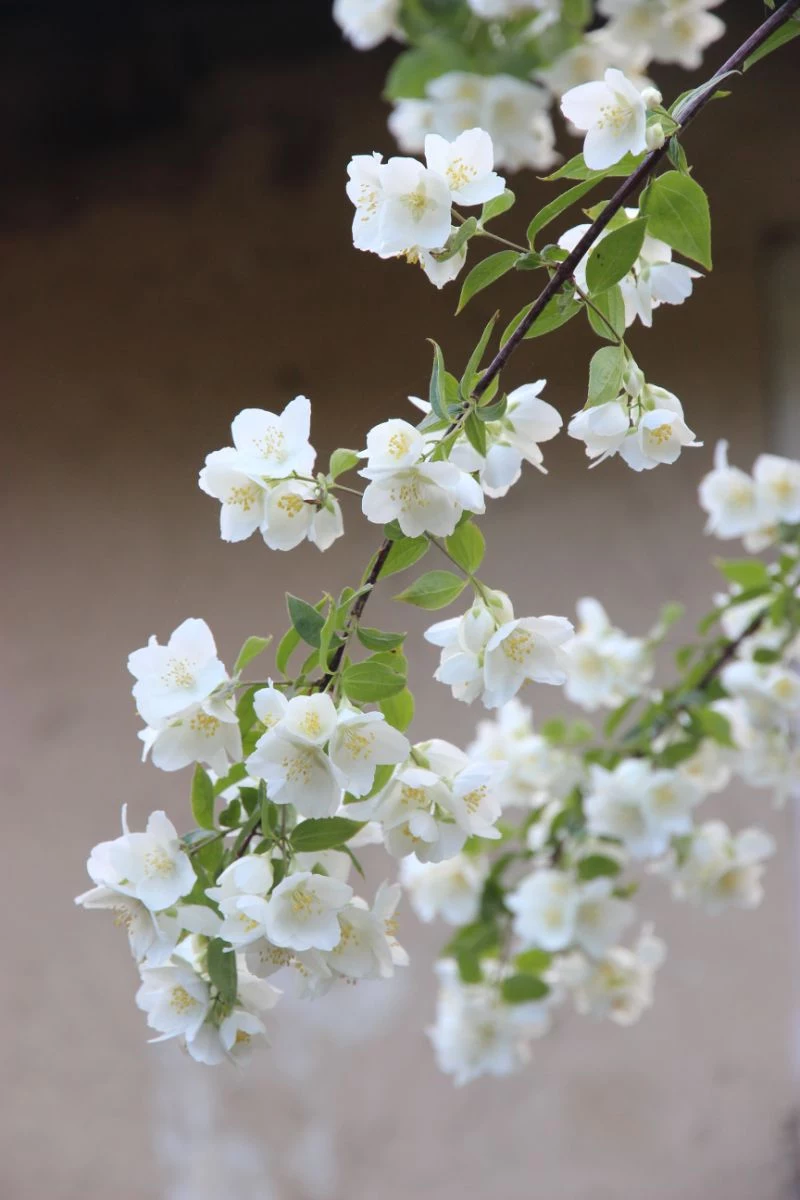
Troubleshooting: Why Isn’t My Jasmine Happy?
Even with the best care, things can go wrong. Here are the usual suspects:
- Yellowing Leaves: If new leaves are yellow with green veins, it’s likely an iron deficiency. If older, lower leaves are yellowing, you’re probably overwatering. Check the soil moisture first!
- No Flowers: This is the big one. Let’s run through a checklist:
1. Is it getting at least 6 hours of direct sun?
2. Did you accidentally prune it at the wrong time of year and cut off the flower buds?
3. Are you giving it too much high-nitrogen fertilizer?
4. Is the plant simply too young? Give it a couple of years to mature. - Pests: Aphids or spider mites can sometimes show up. A strong blast from the hose is often enough to solve it. If not, insecticidal soap is a safe bet.
Your Quick Win for Today
The easiest thing you can do for your jasmine’s health? Go outside right now and check the mulch around its base. Make sure it’s pulled back a few inches from the main stem. It takes 30 seconds and is the number one way to prevent deadly stem rot.
Growing a magnificent jasmine is a partnership. It takes some patience up front, but the reward is huge. When you step outside on a warm night and that incredible fragrance hits you, you’ll know it was all worth it. You didn’t just grow a plant—you built an experience.
Inspirational Gallery
How can I encourage my vining jasmine to produce more flowers?
The secret is in the timing of your pruning. For summer-flowering varieties like Jasminum officinale, prune them in late winter or very early spring, just before new growth begins. This encourages the plant to put its energy into producing flowering shoots. For winter jasmine (J. nudiflorum), which flowers on old wood, wait until after its floral display is finished in the spring. A light trim to shape the plant and remove any dead or tangled stems is all it needs.
Think with your nose: The single greatest mistake in placing a jasmine vine is forgetting why you planted it. Don’t relegate it to a forgotten back fence. Plant it near a window you open often, along a walkway you use in the evening, or framing a patio seating area. The goal is to create pockets of fragrance that you can walk into and experience, turning a simple garden feature into a sensory event.
While many flowers are pollinated by bees during the day, the most fragrant white jasmines often release their peak scent at night to attract their primary pollinators: moths.
Growing Arabian Jasmine (J. sambac) in a pot is a perfect way to enjoy its perfume in colder climates. The key is giving it what it needs to feel at home.
- Choose a terracotta pot, which breathes and prevents waterlogging.
- Use a high-quality, well-draining potting mix; a brand like Espoma Organic Potting Mix amended with extra perlite is ideal.
- Feed it with a fertilizer high in phosphorus (the middle number) during the growing season to boost blooms.
- Bring it indoors before the first frost, placing it in your sunniest window.
Traditional Wood Trellis: Offers a classic, cottage-garden look and provides a dense grid for the vine to weave through. Best for creating a solid wall of green.
Modern Wire System: Creates a minimalist, architectural feel by using stainless steel wires and tensioners, like those from Gripple. This allows the wall’s texture (brick, stone, stucco) to show through and gives the jasmine an elegant, floating appearance.
Ultimately, the choice depends on whether you want the support to be a feature or to disappear behind the foliage.
- Prevents root rot, the number one killer of potted jasmine.
- Improves aeration, allowing roots to breathe and grow stronger.
- Ensures nutrients are available to the plant, not washed away in stagnant water.
The secret? A simple soil recipe. For every two parts of your standard potting soil, add one part coarse sand or perlite. This small step makes a huge difference in drainage and plant health.
In India, the Arabian Jasmine, known as ‘Mogra’ or ‘Motiya’, is deeply woven into the cultural fabric. It’s not just a garden plant but a symbol of purity, love, and devotion. Women weave the fragrant buds into their hair, garlands are offered in temples, and its essential oil is a cornerstone of traditional perfumes and ceremonies. This reverence highlights jasmine as more than a plant—it’s a piece of living heritage.
It takes approximately 8,000 hand-picked jasmine blossoms to produce just 1 gram of jasmine absolute, the concentrated oil used in high-end perfumery.
This incredible labor intensity is why true jasmine is one of the most precious ingredients in fragrances from brands like Chanel and Dior. Each flower must be picked at dawn when its scent is most potent, explaining the luxurious cost and the perfumers’ description of it as ‘liquid moonlight’.
Even the toughest jasmine can fall prey to sap-sucking pests like aphids and spider mites, especially when stressed. Before reaching for harsh chemicals, try these organic defenses:
- A strong jet of water from a hose can physically dislodge most aphid colonies.
- For persistent pests, a spray bottle with a few drops of dish soap (one that is free of degreasers and bleach) in water can suffocate them.
- Encourage beneficial insects like ladybugs and lacewings; they are your garden’s best security guards.
Jasmine prefers consistently moist soil but absolutely detests wet feet. A common well-intentioned mistake is overwatering, which leads to yellowing leaves and root rot. Always check the top inch of soil; if it’s dry to the touch, it’s time to water. If it’s still damp, wait another day.










